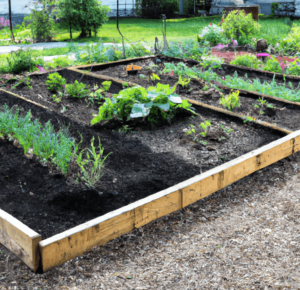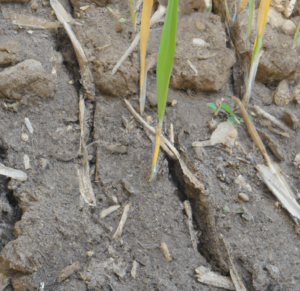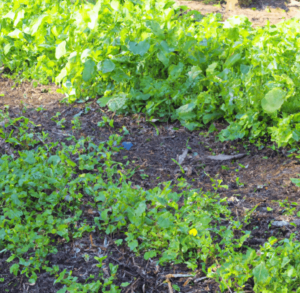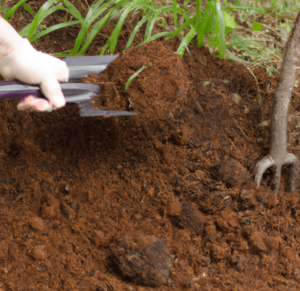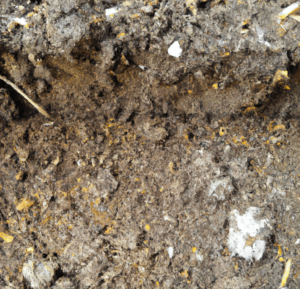The role of soil microbes in your garden is pretty major and there are other ways to ensure the success of your garden. One of them is learning how to create and maintain a soil web in your garden or the intricate network of living things that inhabit the earth. Let’s dive into it!
Understanding the Soil Food Web
Gardening is made a lot easier when you know about how to create and maintain a soil food web in your garden or the intricate network of micro- and micro-organisms in the soil, such as bacteria, fungi, insects, and other micro- and macro-faun.
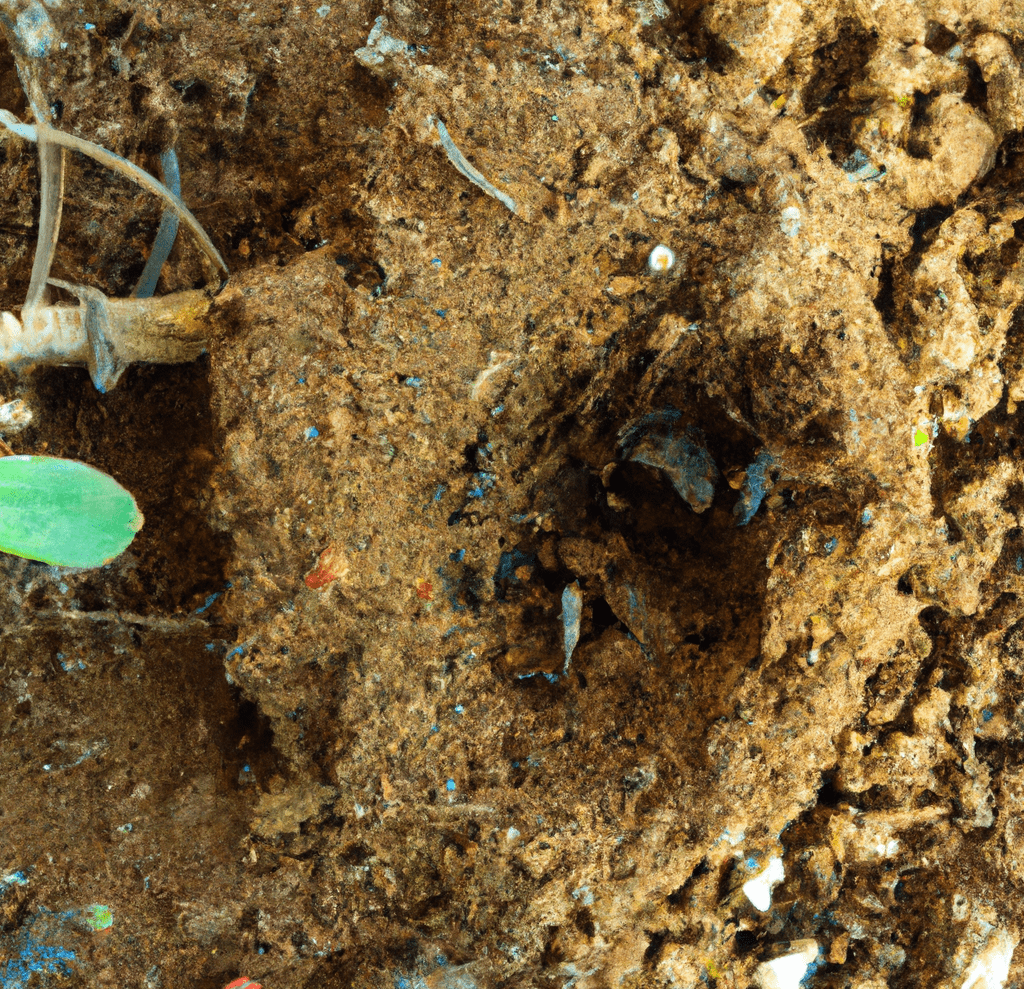
This environment promotes plant development, aids in the decomposition of organic materials, and recycles nutrients. Gardeners can increase the fertility, water-holding capacity, and overall structure of the soil by cultivating a healthy soil environment, which can result in healthier and more fruitful plants. Practices including increasing organic matter, decreasing tillage, and preserving a variety of soil microorganisms can all help to promote soil health.
Components of the Soil Food Web
Learning about how to create and maintain a soil food web in your garden is understanding its components. Plants, microbes, insects, and other creatures are a few of the essential elements.
As the source of energy for the microbes and other species that make up the soil food web, plants are essential to the system. Your garden’s plant population should be thriving and variety to support not only aesthetic appeal but also the expansion and production of your garden. This entails giving the plants enough sunlight, water, and nutrients in addition to avoiding over-tillage and the application of pesticides.
The health of your garden depends on the existence of plants as well as helpful bacteria and insects like earthworms and ladybugs. Ladybugs are natural predators of many garden pests, while earthworms aerate the soil and break down organic debris.
Microorganisms
Learning about how to create and maintain a soil food web in your garden? Let’s take a look at microorganisms. They assist in decomposing organic debris and releasing vital nutrients back into the soil in the ground and garden beds, making it simpler for plants to absorb those nutrients.
In addition to enhancing soil fertility and the general well-being of garden plants, microorganisms also aid in the management of pests and illnesses.
Fungi
Another part of learning about how to create and maintain a soil food web in your garden is looking at fungi. These tiny creatures, which may be found in almost all types of soil, are necessary for decomposing organic debris and reintroducing vital nutrients into the soil. This procedure aids in enhancing the fertility and health of the soil, which in turn promotes plant development and productivity.
For instance, certain fungal species develop symbiotic associations with plants known as mycorrhizae that enable the plants to absorb nutrients and water from the soil. In exchange, the fungi receive vital sugars from the plants that they use as fuel. Fungi are beneficial to plants, but they also contribute significantly to the health and fertility of the soil by deteriorating and decomposing organic substances, such as dead plant matter and animal waste. This procedure aids in enhancing the structure of the soil, which facilitates plant rooting and growth.
Invertebrates
The majority of species on earth are invertebrates, a diverse group of animals without backbones. They have special adaptations that allow them to live in many ecosystems and play key roles in them.
Numerous invertebrates have seasonal life cycles that are influenced by elements of the environment, including temperature, the availability of food, and reproduction.
Creating a Soil Food Web in Your Garden
If you want to learn how to create and maintain a soil food web in your garden, you can do so by using:
- Compost, well-rotted manure, or other organic matter can be added to the soil as organic matter.
- Reduces soil disturbance or tillage as much as possible to protect current soil life and promote the emergence of new soil organisms.
- Planting cover crops, such as clover, rye, or hairy vetch, can enhance soil structure, increase soil organic matter, and offer food and shelter for soil creatures.
- Compost teas, mycorrhizal fungal products, and other beneficial microbes can be used to introduce healthy bacteria and fungi to your soil.
Preparing the Soil
As you learn how to create and maintain a soil food bed in your garden, you have to prepare the soil:
- Check the pH of the soil to see if the plants you intend to grow will thrive there.
- To enhance the soil’s structure and fertility, incorporate organic matter into the soil, such as compost or well-rotted manure.
- Remove any trash, such as rocks or sticks, and break up any significant soil clumps.
- To enable roots to freely grow, loosen the soil to a depth of at least 12 inches.
- For your plants to receive consistent nutrients, think about incorporating slow-release fertilizer into the soil.
Testing the Soil
The right kind of soil is essential for a healthy garden. It’s crucial to frequently test your soil to make sure your flowers and other plants are getting the nutrients they require to thrive robustly and healthily. When you’re learning how to create and maintain a soil food bed in your garden, you’ll have a better grasp of the pH value, nutritional content, and any other elements that can affect the health of your garden by using a testing kit.
Most garden supply businesses sell numerous straightforward soil testing kits. These kits often come with a tiny tool you can use to collect a sample of soil from your garden as well as guidelines for deciphering the outcomes. In order to provide your plants with the best growing conditions, you might need to supplement the soil with more nutrients or change the pH level, depending on the test’s results.
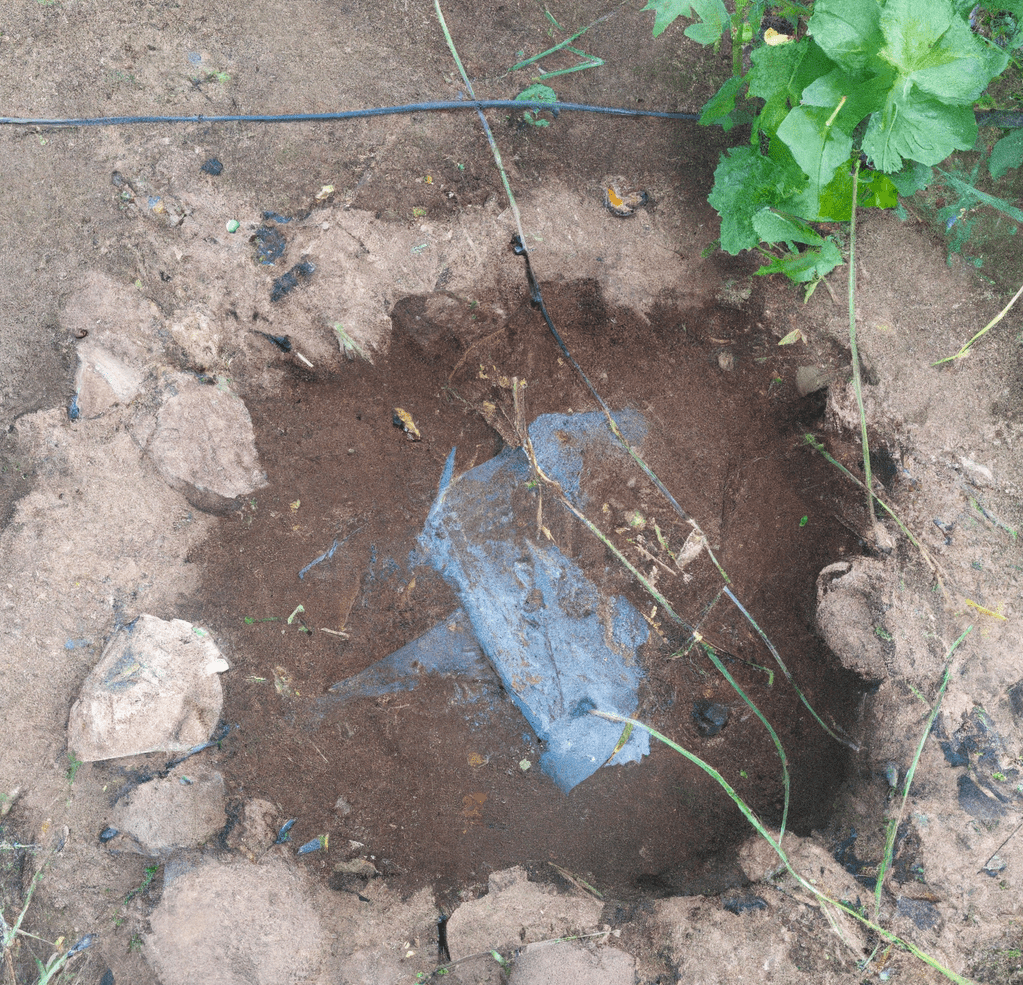
Amending the Soil
As you learn how to create and maintain a soil food web in your garden, you will need to learn how to amend the soil. Some advantages of amending the soil include:
- Improved Drainage: Adding organic matter to the soil, such as compost, enhances the soil’s structure and porosity, which facilitates better water drainage.
- Enhanced Fertility: By amending the soil with nutrients, such as fertilizer, plants are given the nutrition they need to grow and develop.
- Better air circulation: Better air circulation in the soil, which is necessary for strong root growth, is made possible by improved soil structure.
- Reduced Soil Compaction: Adding amendments to the soil helps lessen soil compaction, which can stunt root development and harm plants.
Maintaining a Soil Food Web
Use gardening techniques that promote and stimulate the growth of beneficial organisms to maintain a healthy soil food web. After learning how to create and maintain a soil food web in your garden from this article:
- Avoiding the use of chemical pesticides and fertilizers is part of this since they can upset the delicate balance of the soil food web. Instead, think about adopting organic gardening methods like composting and cover crops to provide your plants with the nutrients they need and to encourage the development of healthy soil bacteria.
- Making eco-friendly and non-toxic gardening supply choices is another crucial step in sustaining a healthy soil food web. Instead of using plastic mulches, which can smother the soil and destroy beneficial insects and other species, pick organic mulches and soil additives.
Monitoring Soil Health
Now that you know how to create and maintain a soil food web in your garden, you can periodically monitor your soil:
- Using a soil test kit, it is possible to frequently evaluate the physical and chemical properties of the soil, including its fertility, texture, structure, pH level, and nutrient content.
- By adding organic matter, rotating crops, utilizing natural fertilizers, using the right watering and aeration techniques, and other methods, one can improve the soil’s quality while simultaneously enhancing the health of the plants.
While unhealthy soil can result in stunted growth, yellowing foliage, and even plant death, healthy soil can promote strong root growth, better water retention, and overall better plant health.
Testing Soil pH and Nutrient Levels
When you’re learning how to create and maintain a soil food web in your garden, you may need to test the soil. Having a thorough understanding of your soil’s pH and nutrient levels will help you modify them to fit the unique needs of your plants, resulting in their strongest and healthiest growth:
- Better flower production: Regular soil testing will make sure that the conditions needed for flowers to bloom are satisfied, which will result in more flowers of higher quality and quantity.
- Prevention of disease: Plant diseases can be brought on by soil that is overly acidic or alkaline, and routine testing can help with this.
- Effective use of fertilizers: You may use fertilizers more effectively and prevent over-fertilization, which can harm your plants, by understanding the amounts of nutrients in your soil.
Observing Plant Growth
Now that you know how to create and maintain a soil food web in your garden, you can observe your plants. You can better understand the fundamental biology of plants, their patterns of growth, and the environmental variables that influence them. Also, it fosters a sense of connection with nature and has the potential to be therapeutic for many:
- Plants: You may watch plants develop in a variety of places, including pots on a windowsill, raised garden beds, and ground-level garden beds.
- Ground: If your garden bed is at ground level, you may watch the plants develop from seed to maturity. This is a fantastic technique to observe how plants respond to various environmental cues and growing circumstances.
- Garden: In a garden, you can see different kinds of plants coexisting and interacting with one another. This can reveal details on how plants cohabit, compete for resources, and influence one another’s growth.
- Raised Garden Bed: Some of the benefits of using raised garden beds in gardening includes the fact that you can better control the soil’s conditions and it’s easier to see the plants, a raised garden bed is a terrific choice for studying plant growth. Studying plants in a garden bed can give you a better understanding of their roots and how they take up water and nutrients from the soil.
Managing Pests and Diseases
If left untreated, pests and illnesses can significantly affect the health and growth of your plants and swiftly spread across your garden. It’s essential to properly handle these problems after learning how to create and maintain a soil food web in your garden.
Making ensuring your soil is healthy is one of the first steps in combating pests and illnesses. In addition to promoting general plant health, healthy soil can help plants withstand pests and diseases more effectively.
To make sure that your soil is supplying your plants with the nutrients they need to thrive, you can regularly test your soil and amend it. Then you can make sure that there’s no spread of dangerous pests and diseases to other plants in your garden and the nearby surroundings.
Using Integrated Pest Management
A sustainable and eco-friendly method of managing pests in both urban and agricultural settings is integrated pest management (IPM). This method minimizes the use of pesticides while combining several tactics to reduce pest populations and harm to crops or property.
IPM is a seasonal approach that considers the pests’ life cycles and the timing of different control techniques. IPM is a powerful tool for managing pest populations because it keeps an eye on pests and targets them when they are most vulnerable in their life cycles. Physical eradication, biological controls, cultural controls, and the sparing use of pesticides are among IPM tactics.
Avoiding Chemical Pesticides
When you’re learning how to create and maintain a soil food web in your garden, you may be wondering whether or not you should pick up that pesticide. Here’s a little more information on chemical solutions:
- Chemical pesticides can damage the ecosystem by contaminating groundwater and water supplies, killing helpful insects and pollinators, and harming beneficial insects.
- They may also be harmful to the health of animals, pets, and people.
- You can make your garden, lawn, and plants healthier and safer by eliminating chemical pesticides, as well as a safer environment for you and your family.
However, if you want to use more natural alternatives:
- Utilize companion planting to keep pests away organically.
- Encourage benevolent pollinators and insects
- Use organic pest management techniques like neem oil or garlic spray.
- Maintaining good garden hygiene will help you avoid pest infestations.
- To maintain healthy soil and plants, use organic fertilizers and soil amendments.
Watering and Irrigation
Learning how to create and maintain a soil food web in your garden is using the proper water and irrigation techniques. Moisture is particularly important because it can:
- Enhance soil fertility and structure
- Improve root growth
- Increase plant productivity and growth
- Illness and pest infestations are less likely
There are numerous choices for irrigation and watering, including rainwater collecting, automatic irrigation systems, and manual watering with a hose or watering can.
Bottom Line: How to Create and Maintain a Soil Food Web in Your Garden
Learning about how to create and maintain a soil food web is for anyone in the gardening community whether you’re a farmer or an enthusiast. There’s a lot of science behind this little world in your soil but in general, if you take care of the soil food web, it’ll take care of your garden.
FAQs on How to Create and Maintain a Soil Food Web in Your Garden
What is a soil food web and why is it important?
The complex web of micro- and micro-organisms in the soil, including bacteria, fungi, insects, and other micro- and macro-fauna, is referred to as the soil food web. This setting encourages the growth of plants, assists in the breakdown of organic matter, and recycles nutrients. The growth and productivity of plants in a garden depend on a healthy soil food web.
How do microorganisms improve a garden’s health?
A healthy garden’s ecology is maintained in large part by microorganisms. They support the breakdown of organic waste, the return of essential nutrients to the soil, and the control of diseases and pests. A garden can be healthier and more productive if the soil’s microbial population is flourishing.
What role do invertebrates play in the soil food web?
A varied collection of animals without backbones known as invertebrates serve important functions in many ecosystems. Understanding their seasonal activities and patterns can help us better understand how intricate the natural world is. For a garden to thrive and provide fruit, invertebrates should be encouraged as they contribute to the health and balance of the soil food chain.
Why do soil amendments exist?
Adding organic or inorganic materials to the soil in order to improve its physical, chemical, and biological properties are known as a soil amendment.
What advantages do soil amendments have?
The advantages of soil amendments include better air circulation in the soil, decreased soil compaction, improved drainage, and increased fertility.
What steps may gardeners take to preserve a balanced soil food web?
By choosing eco-friendly and non-toxic gardening supplies, adopting organic gardening techniques like composting and cover crops, and avoiding the use of chemical pesticides and fertilizers, gardeners may maintain a healthy soil food web.
Why is it crucial to keep track of the soil health in a garden?
Because healthy soil provides plants with the nutrients, water, and support they require for growth, it is crucial to monitor soil health in gardens. Gardeners can boost the quality of the soil and the health of the plants by keeping an eye on the soil’s condition.
Why are soil pH and nutrient levels crucial to test?
Analyzing the pH and nutrient levels of soil is crucial because it enables gardeners to alter the soil to meet the particular needs of their plants, promoting the healthiest and strongest growth. Additionally, it guards against overfertilization and plant diseases.
What benefits does being aware of plant growth provide?
Benefits of watching plants grow to include a deeper comprehension of the biology of plants, the ability to observe their growth patterns, the ability to feel more connected to nature, and even therapeutic effects.
What is the significance of controlling diseases and pests in a garden?
It’s critical to control pests and illnesses in a garden because, if left unchecked, they can negatively impact plant health and development.


